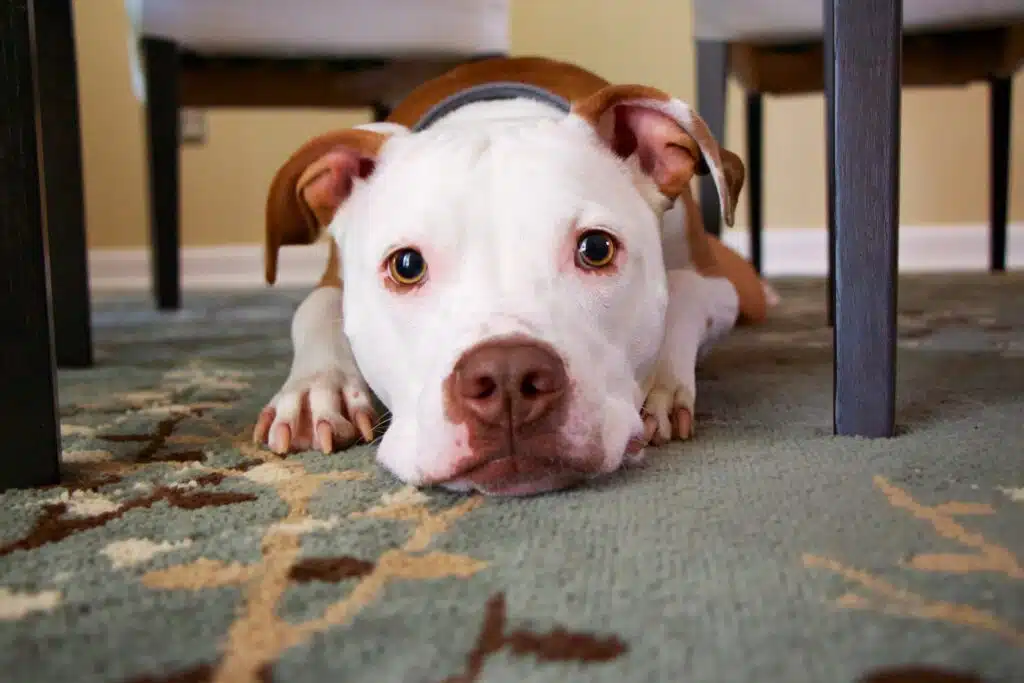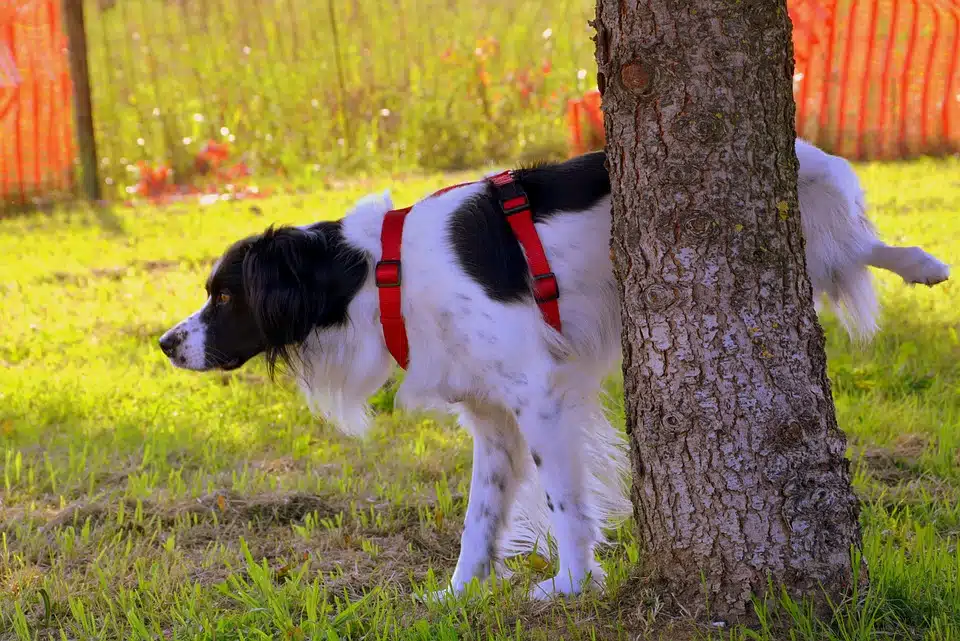Home » Blog » Pet » Pet Health & Safety » UTI in Dogs: Symptoms, Treatment and Prevention
Categories
Tags
animal welfare
breed profile
buying a car
buying a pet
Car
car accessories
car care
car features
car insurance
Car safety
car sales
car service
cat
cat behaviour
cat body language
Cat Breeds
cat food
cat insurance
comprehensive car insurance
Dog
Dog Behaviour
dog body language
Dog Breeds
dog food
Dog Insurance
dog training
eco friendly cars
Kitten
New Car
pet accessories
pet activities
Pet Adoption
pet breeders
pet days of the year
pet fun stuff
Pet Health
pet insurance
pet parenting
Pet Safety
pet services
Puppy
rescue pets
road safety
road trip
safe driving
Recent Blog:
Facebook Posts
2 days ago
Growing old sometimes means we can’t take care of pets anymore. Find out some advice on what to do when this happens:![]()
![]() Senior Pet Parents – Contingency Plans for Your Pet – bit.ly/44bzwkS
... See MoreSee Less
Senior Pet Parents – Contingency Plans for Your Pet – bit.ly/44bzwkS
... See MoreSee Less
Senior Pet Parents' Contingency Plans for Pets
www.pd.com.au
Sometimes senior pet parents need more downtime. For older pet owners, this can be tricky to navigate if their dog or cat is full of beans and wants to4 days ago
Before you rev up the engine, let’s run through a checklist of things to do before starting your car. Not only do these steps ensure your safety (and that of others around you), but they also help in maintaining your vehicle's longevity.![]()
![]() Driving Tips: Your Checklist Before Starting Your Car -
... See MoreSee Less
Driving Tips: Your Checklist Before Starting Your Car -
... See MoreSee Less
Driving Tips: Your Checklist Before Starting Your Car
www.pd.com.au
Heading out for a drive? Hold up a second! Whether you're dashing off to work, running errands, or embarking on a road trip adventure, there are a few1 week ago
Are intestinal worms setting up camp in your dog’s gut without paying rent? Here’s how to spot the main culprits and get rid of them too:![]()
![]() Preventing, Identifying and Treating Intestinal Worms in Dogs - bit.ly/43YjCKu
... See MoreSee Less
Preventing, Identifying and Treating Intestinal Worms in Dogs - bit.ly/43YjCKu
... See MoreSee Less
Preventing, Identifying and Treating Intestinal Worms in Dogs
www.pd.com.au
Intestinal worms, such as roundworms in dogs are one of the least glamorous topics on the planet. These intestinal parasites that basically use our dogsIs your fully house trained pet suddenly peeing in places they’re not supposed to (potentially with blood)? A bladder infection in dogs – known as urinary tract infections, or UTIs – could very well be the cause. Unfortunately, a UTI in dogs is a fairly common occurrence. They can happen to your pet no matter how well cared for they are.
Having said that, females, older dogs and certain breeds are more prone to experiencing this. Dogs with underlying health conditions may also be more prone due to compromised immune systems.
If left untreated a UTI in dogs can lead to a whole array of other nasties (some of which could be fatal). In other words, it’s best to nip it in the bud and help your dog have a soft landing as early on as possible.
Today, PD is sharing top tips on prevention, symptoms and treatment.
In this article
- Why does my dog keep peeing inside?
- What causes UTI in dogs?
- Why are female dogs and some breeds prone?
- What are the symptoms of UTI in dogs
- How to prevent UTI in dogs
- How can I treat my dog’s UTI at home?
- Getting professional vet treatment
- What happens if a UTI goes untreated in dogs?
- Give your dog a soft landing

Why does my dog keep peeing inside?
If you’re one of the many pet owners across Australia and around the globe wondering why does my dog keep peeing inside then researching a UTI in dogs could present the answer you’re looking for.
Of course, there are other potential causes. If your dog is vomiting with gastro or is a golden oldie then they might simply not make it to their usual spot in time. Bladder stones and kidney disease may also be the cause.
But the most common culprit by far, remains the pesky UTI in dogs.
What causes a UTI in dogs?
As above, UTI stands for urinary tract infection. A UTI in dogs, cats, humans and so on is an infection in the urinary tract that’s caused by bacteria. This needn’t be nasty bacteria. It could be a relatively normal bacteria like those that live on the skin or intestinal flora like E. coli.
But the long and short of it is that it shouldn’t be in the urinary tract.
The urinary tract is normally a sterile environment, yet every so often bacteria from the outside world may manage to sneak past the natural immune defences. Once inside it proliferates and tries taking over the world – or at any rate, the area of the urinary tract that it reaches.
A bladder infection in dogs tends to be a lower urinary tract infection. In male dogs, lower tract infections can also affect the prostate. But the issue can also be in the upper urinary tract, affecting the kidneys, ureters or both.
If your dog is peeing blood then a UTI in dogs is likely the culprit and it’s time for a visit to the vet.

Why are female dogs and some breeds prone?
A UTI in female dogs is likelier simply because they have a shorter urethra. In male dogs, having a longer urethra means that bacteria need to travel farther before they can cause infection and as a result they may not get there at all.
Dog breeds that are prone to getting urinary tract stones (also known as bladder stones) tend to develop a UTI as a result. The stones are composed of minerals that build up inside the bladder, leading to inflammation. This makes these pups more prone to UTI as a secondary infection.
Bladder stones are more common in certain breeds, including Dalmatians, Schnauzers, Pugs and French Bulldogs to name a few. Bladder stones in themselves can also be the reason behind a dog peeing blood.
What are the symptoms of a UTI in dogs?
Generally, a UTI in dogs makes it harder for them to pee, which means you’ll see some behavioural changes.
Dogs may be in discomfort, pain and stress when peeing (or trying to). Unfortunately this leads to accidental whoopsies around the house. These puddles or dribbles are often tell-tale signs of a UTI in dogs. Another one that’s often a clear signal, as we’ve said, is a dog peeing blood.
Dogs may display one, some or no symptoms. However, they’re very likely to have some indicators and knowing what to be on the lookout for can help you help them sooner.
Here’s a list of possible symptoms of UTI in dogs:
- Straining to pee
- Peeing more often but only in small amounts
- Accidental whoopsies in the house
- Strange smell in the pee
- Licking genitals excessively
- More thirsty than usual
- Blood in the pee
- Cloudy pee
- Evident pain when peeing (whining, straining and whimpering)
- Going outside more often
- Fever
- Vomiting
- Not hungry
- Feeling lethargic
As we’ve already mentioned, dogs with a UTI may have some, none or all of these symptoms. What’s important is that the last four on the list are indicators that the infection has reached a more serious level and should be treated immediately.
Ideally you take your dog to the vet at the first sign of a potential UTI. Or if there are no indicators, hopefully your vet picks it up during a routine check-up.

How to prevent a UTI in dogs
Keeping dogs healthy is an important part of staving off infection. Making sure they exercise, eat well and are well groomed are all part of bolstering a good immune system.
In terms of their diet, many pet food brands now offer dog food that’s tailored to urinary health. A big part of a good diet is giving your dog access to fresh water at all times. If your dog isn’t enjoying their water bowl as much as they should, consider getting them a water fountain (like the one in our article on Christmas gifts for pet lovers). By keeping drinking water flowing and cool it stays fresher and more appealing.
When it comes to grooming be sure to give your dog baths as regularly as is recommended for their breed and fur type. Ensure you clean the area around the urinary opening because that’s where bacteria will travel into the urinary tract.
While all these aspects of dog health may prevent a UTI, there’s no guarantee. If you still find your dog is peeing around the house it might be time to get a vet to diagnose them.

How can I treat my dog’s UTI at home?
There are plenty of at-home treatments available to assist in dog UTI treatment. These range from supplements and chews to homoeopathic treatments. However, before jumping the gun and trying to treat a UTI in dogs yourself, you need to know if it really is a UTI at all.
There’s always the very real risk that a UTI is caused by something else. This may be a congenital condition, illness or age. Vets use scientific diagnostic tests, because bladder infections in dogs may be treated differently to upper UTIs, for example. Complicated, acute or chronic UTIs also need to be managed differently as these often indicate a greater level of treatment and management is necessary.
These are factors you won’t be able to assess without veterinary knowledge. This is why vet diagnosis is a really good place to begin.
Getting professional vet treatment
A vet has the technology, knowledge and equipment to perform tests to diagnose UTI in dogs. Tests range depending on the degree and stage of infection. For example, diagnostic tests may include urinalysis or a urine culture and susceptibility test. In more acute cases, however they may also include, x-rays, cystoscopy, blood tests, ultrasound and radiographs.
This helps to explore whether the UTI is caused by a more severe condition. Like Cushing’s disease or diabetes in dogs, for example.
Treatment typically involves a targeted antibiotic based on what type of bacteria is causing the infection. Additional medication can include anti-inflammatories and something for the pain your dog is experiencing.
Tests will help your vet be able to help rule out any serious underlying conditions. Or if the UTI is a result of another health condition then your vet can help create a treatment management plan to protect your dog’s health.

What happens if a UTI goes untreated in dogs?
An untreated UTI in dogs could travel even farther, making it into the kidneys. What started as your dog peeing blood can quickly lead to infection of the kidneys and kidney failure. Keeping in mind that a bladder infection may be symptomatic of more serious underlying conditions, leaving it untreated can create a myriad of possible health risks.
Not treating UTIs in dogs can cause the lower urinary tract infection to stop functioning properly. It can lead to blood poisoning, inflammation of the prostate and a whole host of other dangers. In the most serious cases, leaving it untreated can be fatal.
Bladder infections in dogs and other UTIs are uncomfortable and painful. If your dog is peeing blood or just having a hard time peeing altogether, help them by taking them to your vet right away.
Give your dog a soft landing
Give your dog a soft landing by having dog insurance ready for any health complications that could arise. As we’ve mentioned bladder infections and other UTIs in dogs are a common unexpected condition and just one of many.
Just like humans can get ill or injured so can pets. And like doctors, vets are highly skilled practitioners that need to be well equipped with costly technology and machinery. There’s no need to put yourself in a pickle by worrying about the costs of vet treatment. Vets need to practice to keep dogs safe and sound. You need to take your dog to get professional care to give yourself peace of mind.
Most of all, when your dog (or cat) needs medical help, then that’s what they deserve. By having a pet insurance plan in place, unexpected vet treatments, prescription medication, x-rays and more can all be included in your plan. Your finances can be cushioned and your pet can have the soft landing they deserve.
Click below to get a quote and one or more months of FREE pet insurance.
Share On:




